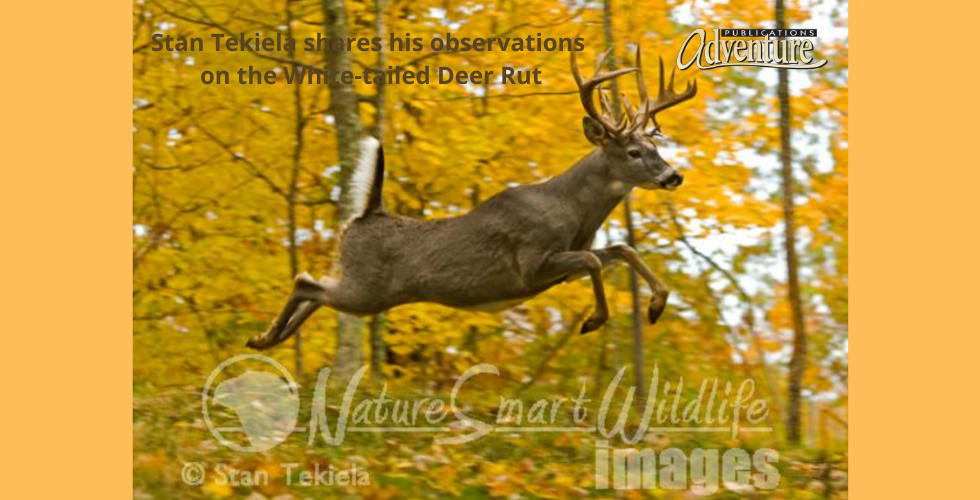
Mating Behaviors of White-tailed Deer
Yet another White-tailed Deer (Odocoileus virginianus) mating season is behind us now. This year I spent a truckload of time in the woods following several large bucks who were actively searching for mates. I was able to capture a pile of images of the most interesting mating behavior.
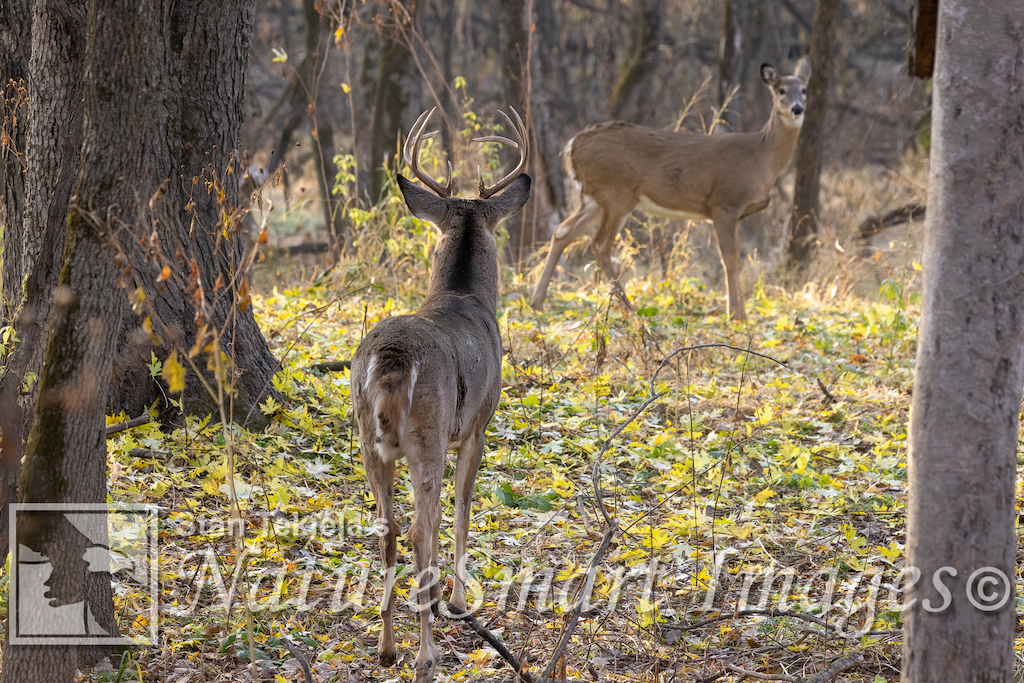
The mating season, also known as the rut, for White-tailed Deer lasts about three weeks in the northern states. The rut starts in mid-October and runs through mid-November. Several research studies show that the timing of the rut is influenced by the lunar (moon) phases. It seems that the rut peaks about seven days after the second full moon during October and November.
I find the word “rut” to be a funny one for describing the mating season. It turns out that the word rut comes from the Latin “rugire,” meaning “to roar.” Presumably it’s a reference to animal species such as the Elk, as the male bugles or roars to proclaim possession of a harem of females.
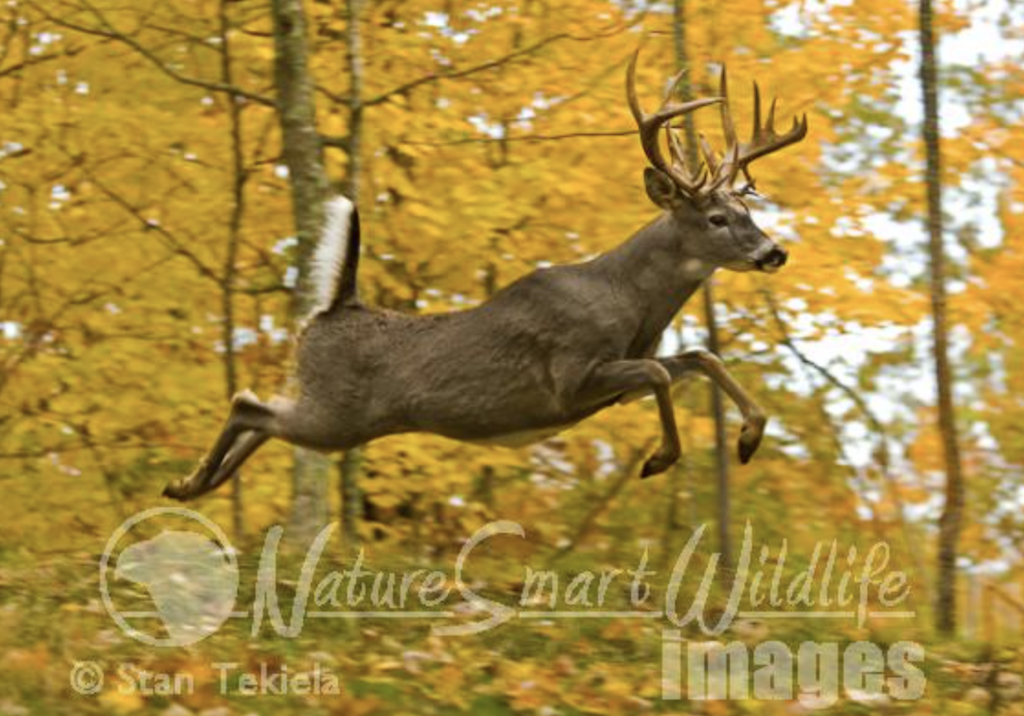
During the rut season, the male White-tailed Deer experiences a huge increase in testosterone rushing through his bloodstream, which boosts aggressiveness, leading to fights with other males to establish dominancy or access to females. Even young bucks with tiny antlers engage in these sparring matches. In addition to fighting, the big bucks will also rub their antlers on tree trunks. This often results in stripping the bark off of young trees. They will also thrash their antlers around in a low-growing shrub, often breaking off the branches.
In both deer and elk species, the males will mark themselves with mud or urine during the rut. Last month, while I was filming Elk during the rut in Montana, several of the bull Elk rolled in mud or completely submerged themselves in muddy water. It appeared to me that the most dominant males didn’t used mud coatings but instead urinated across their own belly and down their hind legs. Either way, it seems the males are going to extraordinary measures to show off for the females.
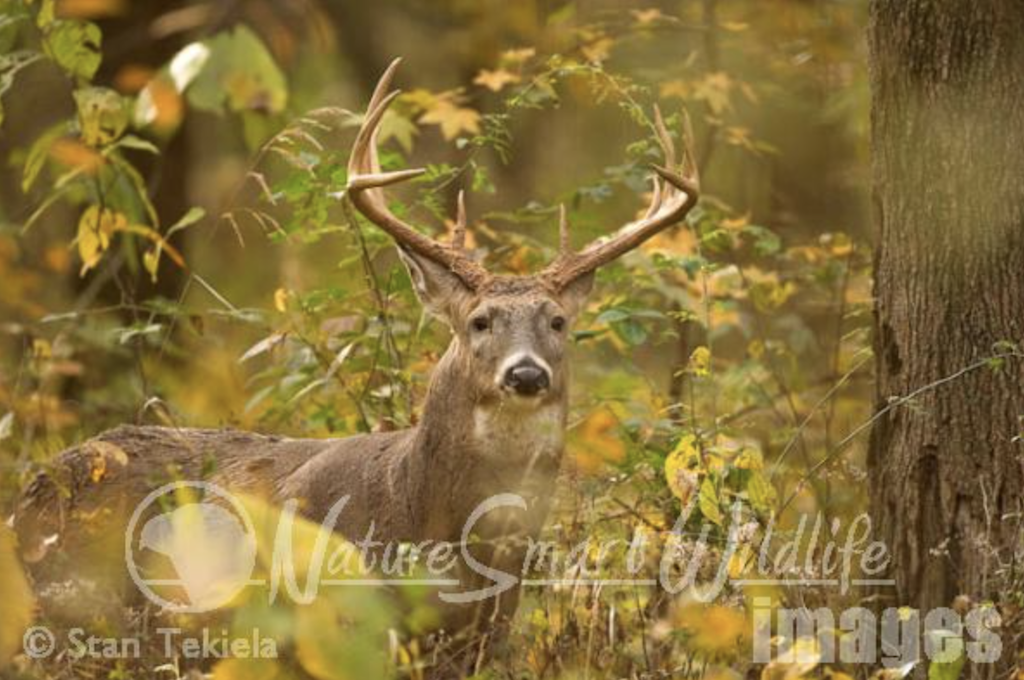
Speaking of hind legs, the inside portion of the leg, at the bend of the ankle, is where one of the largest scent glands is located on the White-tailed Deer. It gives off a strong musky odor that you can smell if you get close to a rutting male. Every year, when I am out with the deer during the rut, I marvel when I get a whiff of the males rutting perfume. It’s a sweet yet pungent odor; once you smell it, you will never forget it.
Female White-tailed Deer are called does. While the males can be ready to mate for several weeks before the rut and several weeks after, the does are only in estrus (ready to mate) for only about 72 hours. This narrow window of opportunity means the male needs to get his timing just right. Since each female comes into estrus on her own schedule, the male is constantly on the move, traveling over great distances, looking for each doe that is in estrus.
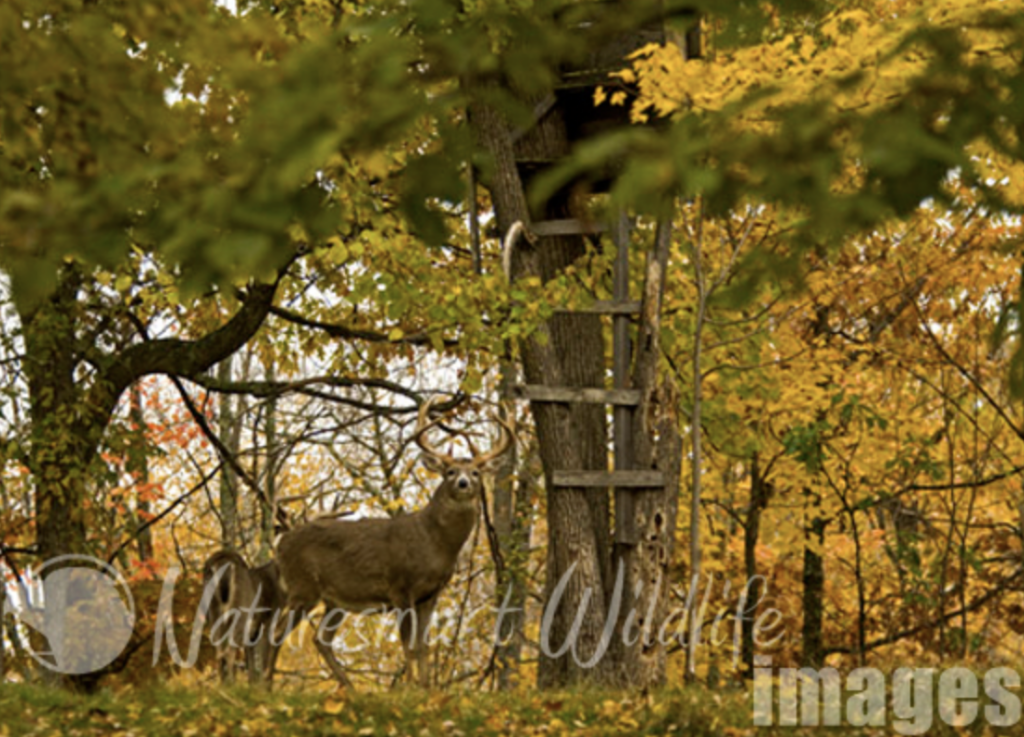
Many books state that the bucks don’t eat during the rut because they are too busy chasing after females or fighting other males. I can tell you with 100% certainty that the bucks do stop and eat while chasing does. The bucks don’t eat as much as they normally would, so they do lose weight during the rut, but they are definitely eating.
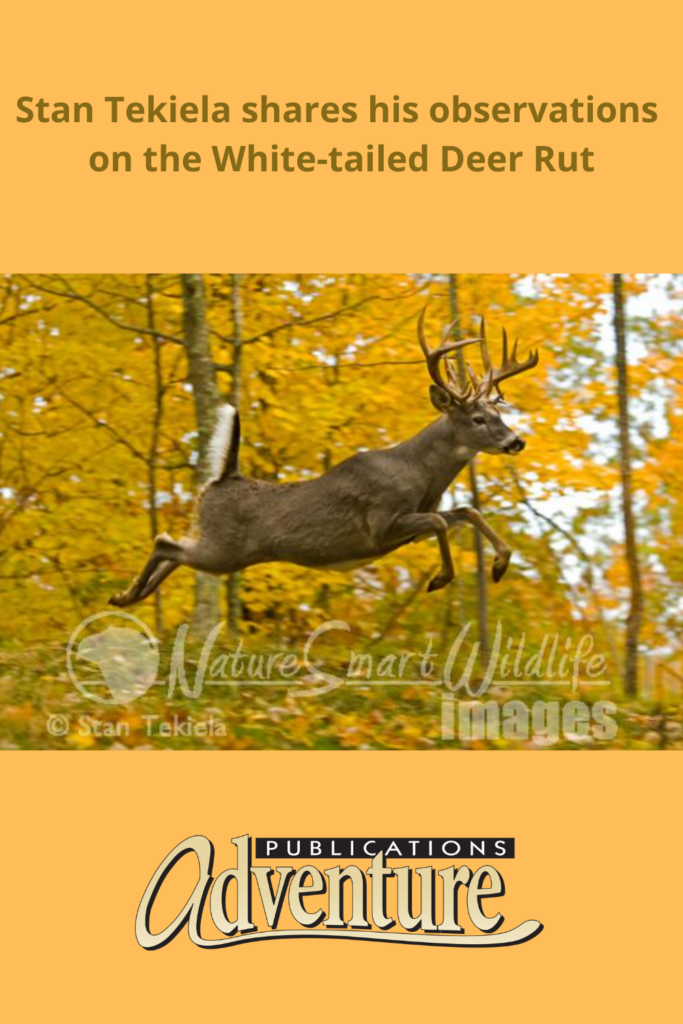
Some research shows that a breeding buck loses as much as 20-25% of its body weight during the rut. So, on average, a breeding buck weighing about 180 pounds can lose about 30 to 40 pounds in just a month or two. In the post-rut, the buck often spends an extraordinary amount of time eating and just laying down and recovering.
One thing is for sure about the White-tailed Deer rut. I already can’t wait for next year when the leaves change color and the Elk and the White-tailed bucks are back at it.
If you enjoyed Stan’s post, you may enjoy one of his amazing nature books: Wild Birds, Backyard Birds: Welcomed Guests at our Gardens and Feeders, and Bald Eagles: The Ultimate Raptors.
You can follow Stan on Facebook and Twitter, or contact him via his web page. Stan’s nationally syndicated NatureSmart column appears in more than 25 cities spanning 5 states (Minnesota, Wisconsin, Michigan, Illinois, and Pennsylvania) and is circulated to more than 750,000 readers.
For more stories about wildlife and nature, sign up for our newsletter now! #bewellbeoutdoors


